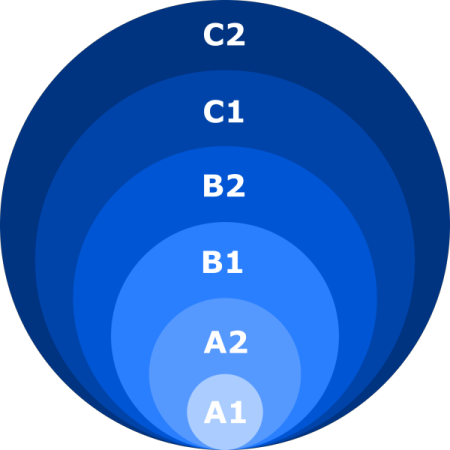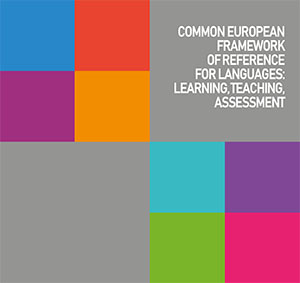The framework
The CEFR: a non-prescriptive framework
As a common framework of reference, the CEFR is primarily intended as a tool for reflection, communication and empowerment. The CEFR does not tell practitioners what to do, or how to do it. It is a tool for reflection for all professionals in the field of foreign/second languages with a view to promoting quality, coherence and transparency through a common meta-language and common scales of language proficiency.
It is designed to provide a transparent, coherent and comprehensive basis for the elaboration of language syllabuses and curriculum guidelines, the design of teaching and learning materials, and the assessment of foreign language proficiency.
The strength of the descriptive scheme is based on long years of experience working on the specification of learning objectives for specific languages; the strength of the scales of language proficiency lies in the fact that they result from long research, including rigorous empirical examination, and the fact that they are directly rooted in the parameters and categories represented in the descriptive scheme of the CEFR.
Workshop
The updated CEFR website – Key concepts and ideas for implementation: videos, workshop materials, documents, articles, … (2023: Brian North)
Videos
Watch How can we counter common misunderstandings and misrepresentations of the CEFR? (2023: Brian North) (12:57)
Watch What does the CEFR Companion volume consist of? (2022: Brian NORTH) (14:28)
Watch The CEFR Companion Volume for learning, teaching and assessment (2020: Brian North) (14:29)
Watch CEFR Companion volume - A tool for teaching and learning (2018: Brian North & Tim Goodier) (15:09)
Documents
The CEFR Common Reference Levels: validated reference points and local strategies (2007: Brian North)
Contextualising uses of the Common European Framework of Reference for Languages (2007: Daniel Coste)
Articles
The Common European Framework of Reference (CEFR) in language education: Past, present, and future (2021: Enrica Piccardo)
Broadening the scope of language education: mediation, plurilingualism, and collaborative learning: The CEFR Companion volume (2019: Enrica Piccardo, Brian North & Tim Goodier)
Six levels of foreign language proficiency

Based on empirical research and widespread consultation, this scheme makes it possible:
- to establish learning and teaching objectives
- to review curricula
- to design teaching materials and
- to provide a basis for recognising language qualifications thus facilitating educational and occupational mobility.
- Levels
- Descriptors
- Content specifications (Reference Level Descriptions)
- Relating examinations to the CEFR
The CEFR is much more than proficiency scales

The CEFR is used in teacher education, the reform of foreign language curricula, the development of teaching materials and for the comparability of qualifications.
The use of the Council of Europe’s logo or of the European emblem for certification is not authorised. It is not the role of the Council of Europe to verify and validate the quality of the link between language examinations or diplomas and the CEFR's proficiency levels.
Member states are responsible for guaranteeing the quality and fairness of testing and assessment on the basis of the existing guidelines (including tools and illustrations) developed in the frame of the Council of Europe’s Language Policy Programme (Strasbourg).
The CEFR online :
CEFR - Companion volume (2020)
French version (Version française)
Arabic version (النسخة العربية)
Basque version (Euskarazko bertsioa)
Italian version (Versione italiana)
Spanish version (Versión en español)
Turkish version (Türkçe versiyonu)



